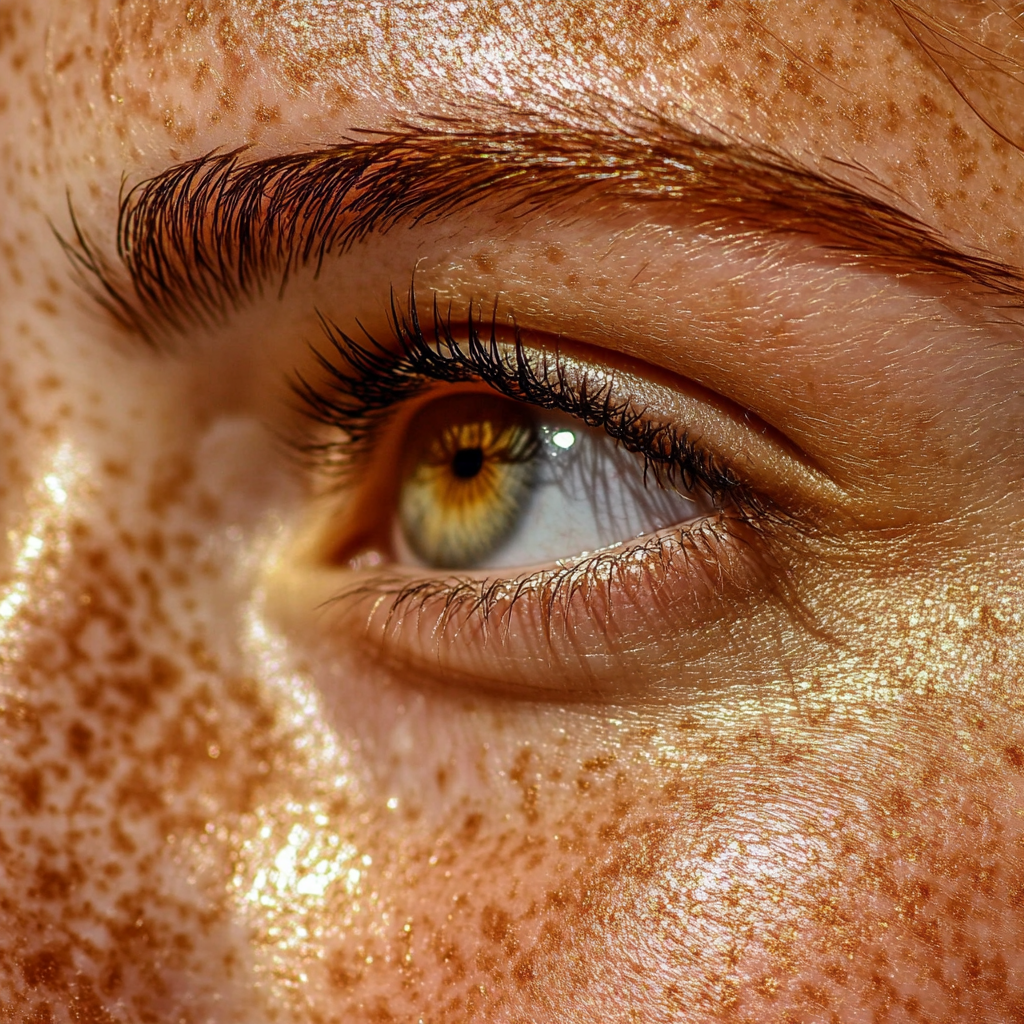Table of Contents
- Introduction: Understanding Melanoma
- How UV Exposure Can Lead to Melanoma
- The Role of Moles in Skin Cancer
- Critical Warning Signs of Melanoma
- The Importance of Regular Skin Examinations
- Common Stages of Life When Moles Increase
- Tips for Prevention and Early Detection
- Key Takeaways
- Disclaimer
1. Introduction: Understanding Melanoma
Melanoma is widely regarded by medical experts as one of the most aggressive and life-threatening forms of skin cancer. According to statistical estimates, the number of people diagnosed with melanoma is on the rise every year. In many countries, more than 12,000 new patients hear the diagnosis of melanoma annually in their dermatologist’s office.
One positive fact is that if detected in its early stages, melanoma can often be treated effectively. Studies suggest that 95–97% of patients have a strong chance of recovery when the cancer is diagnosed before it spreads. Despite these encouraging figures, ongoing vigilance remains crucial because of melanoma’s notorious ability to progress quickly and produce dangerous metastases through the lymphatic system.
Melanoma typically arises from pigment-producing cells known as melanocytes. These cells can mutate due to various triggers—chief among them overexposure to harmful ultraviolet (UV) rays. Because of melanoma’s aggressive nature, regular check-ups with an experienced dermatologist are pivotal in detecting any early changes in moles or other skin lesions.
2. How UV Exposure Can Lead to Melanoma
Excessive exposure to UV radiation is one of the main causes of melanoma. The sun emits UVA and UVB rays, both of which can damage the DNA inside skin cells. Frequent or intense exposure—whether outdoors under strong sun or in tanning beds—can accumulate DNA damage over time, eventually leading to cancerous changes within the cells.

Individuals who habitually stay out in the sun for prolonged periods or frequently visit tanning salons carry the greatest risk of developing melanoma. Their skin endures repeated damage, increasing the chance that a mole or a cluster of melanocytes will develop malignant features.
Key Points on UV Exposure
- Sunburns: Repeated severe sunburns, especially during childhood or adolescence, drastically increase melanoma risk in adulthood.
- Unprotected Skin: Lack of sunscreen, protective clothing, or shade can accelerate DNA damage in skin cells.
- Skin Tone: People with fair complexions, light-colored hair, or freckles generally have fewer natural protective pigments and may be more prone to harm from UV rays.
3. The Role of Moles in Skin Cancer
Moles, also known as nevi, are common skin growths that can be present from birth or appear later in life. While most moles remain benign, certain factors can increase the chance that a mole may transition into a melanoma.
Why Moles Matter
- Genetic Tendencies: Some families have a genetic predisposition to develop more moles, which can elevate melanoma risk.
- Pigment Concentration: The higher the concentration of pigment cells, the more likely a mole could evolve into a malignant tumor if triggered by UV damage or other factors.
- Evolution Over Time: Moles can change in color, size, or shape throughout a person’s life, especially during hormonal fluctuations like puberty or pregnancy.
Dermatologists recommend regular self-checks at home and at least one professional skin exam per year, particularly for people with a large number of moles or a family history of skin cancer. Spotting small changes early—such as shifts in color or shape—can make all the difference in detecting melanoma in its highly treatable stages.
4. Critical Warning Signs of Melanoma

Melanomas often resemble moles at first glance but can exhibit particular features that set them apart from benign skin growths. Pay special attention to the following clues:
- Size and Growth Rate: A mole larger than the size of a pencil eraser, or one that rapidly increases in size, may signal melanoma.
- Irregular Shape and Borders: Benign moles typically have smooth, well-defined edges, while cancerous lesions often appear asymmetrical with blurred or uneven boundaries.
- Color Variation: A mole with multiple colors—ranging from dark brown to black, red, or even white—warrants prompt evaluation. Noncancerous moles tend to be a uniform shade.
- Evolution in Sensation: Itching, burning, tingling, or sensitivity in the area of a mole can be an early warning sign.
- Bleeding or Crusting: Any ulceration, bleeding, or peeling surface on a mole is particularly concerning.
- Sudden Changes: Shifts in color, texture, or elevation that occur over a short time span should never be overlooked.
These signs often constitute the “ABCDE” rule—Asymmetry, Border irregularity, Color changes, Diameter, and Evolving nature. If any of these descriptions apply to a mole on your skin, it’s vital to schedule an appointment with a dermatologist or oncologist to rule out melanoma.
5. The Importance of Regular Skin Examinations
Since melanomas can develop and spread quickly, early detection is crucial. Experts recommend:
- Annual Dermatologist Visits: Routine professional check-ups allow for thorough skin evaluations, specialized diagnostic tools, and timely biopsies if needed.
- Monthly Self-Exams: Take time once a month to inspect your skin from head to toe. Use mirrors to see difficult areas like your back, and pay attention to any unusual growths or changes in existing moles.
- Record Keeping: Keeping track of your moles can help you notice subtle differences that might otherwise go unnoticed. Taking photographs can be especially helpful in monitoring size or color changes.
The key to beating melanoma lies in recognizing it early, before it penetrates deeper layers of skin or begins spreading through the lymphatic system. Even a few months’ delay in diagnosis can allow malignant cells to multiply rapidly, which can complicate treatment outcomes.
6. Common Stages of Life When Moles Increase
It’s not unusual for individuals to develop new moles or notice changes in existing ones at specific life stages:
- Puberty: Hormonal surges can stimulate pigmentation, often causing moles to appear darker or more numerous.
- Early Adulthood (18–22 Years): During late adolescence and early adulthood, moles may continue to appear or expand in size.
- Pregnancy and Menopause: Significant hormonal shifts can trigger the development of new moles or modifications in existing ones. Pregnant women, in particular, should be vigilant about checking moles that grow or darken rapidly.
While changes in moles may not always signal danger, it is critical to stay aware of any unusual developments. Don’t hesitate to consult a dermatologist for peace of mind if something looks or feels different.
7. Tips for Prevention and Early Detection

Although melanoma can be aggressive, you can take proactive steps to reduce your risk and catch potential problems sooner:
- Limit UV Exposure: Avoid direct sunlight during peak hours (usually from 10 a.m. to 4 p.m.), use broad-spectrum sunscreen with an SPF of at least 30, and wear protective clothing such as long-sleeved shirts and wide-brimmed hats.
- Skip Tanning Beds: Artificial tanning devices emit concentrated UV radiation that heightens melanoma risk, often more intensely than natural sunlight.
- Stay Hydrated and Healthy: A robust immune system, supported by proper hydration, balanced nutrition, and adequate sleep, can help your body fend off certain complications.
- Know Your Skin: Regularly examine your body for any changes in moles, freckles, or new growths. Early detection offers the best chance of successful treatment.
- Consult Professionals: If you notice anything unusual, schedule an appointment with a dermatologist right away. Early medical intervention is often simpler, more effective, and less invasive.
8. Key Takeaways
- Rising Incidence: Melanoma diagnoses are increasing worldwide, emphasizing the need for vigilance.
- UV Exposure: Excessive sunlight or tanning bed use can damage skin cell DNA, triggering cancerous mutations.
- Mole Checks: Moles can appear throughout life and change due to hormones or environmental factors; any suspicious variations should be evaluated promptly.
- Warning Signs: Size increases, irregular shapes, color inconsistencies, and unusual sensations in a mole may indicate melanoma.
- Routine Check-Ups: Annual dermatologist visits, supplemented by monthly self-checks, are crucial for early detection and successful treatment.
- Life Stages: Puberty, young adulthood, pregnancy, and menopause are periods when moles often form or darken.
- Prevention: Smart sun behavior, healthy lifestyle choices, and quick action on suspicious changes can significantly lower the risk of advanced melanoma.
9. Disclaimer
This article is intended for general informational purposes only and does not replace personalized medical advice. If you notice any unusual changes in your moles or skin, or if you have concerns about your risk factors, consult a qualified dermatologist or healthcare provider immediately. Early detection can save lives, so do not delay professional assessment if you suspect a potential issue.


